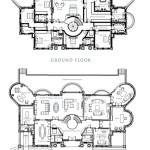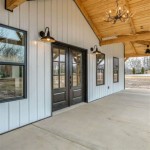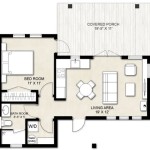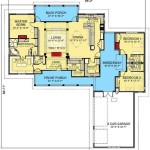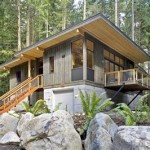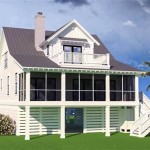Georgian Colonial House Plans refer to architectural designs that replicate the distinctive characteristics of houses built during the Georgian era in America, primarily between 1700 and 1830. These plans serve as blueprints for constructing new homes or renovating existing structures to embody the classic and elegant aesthetics of that period.
The Georgian Colonial style emerged under the influence of British architecture and is known for its symmetrical facades, columned porticos, and finely detailed moldings. Notable examples include Mount Vernon, the estate of George Washington, and Independence Hall in Philadelphia, Pennsylvania. Today, Georgian Colonial House Plans continue to be popular among homeowners seeking a timeless and stately architectural style for their residences.
In this article, we will delve into the key features, benefits, and considerations associated with Georgian Colonial House Plans, providing insights for architects, designers, and homeowners interested in incorporating this architectural style into their projects.
Georgian Colonial House Plans are characterized by several key features that contribute to their timeless appeal and enduring popularity.
- Symmetrical Facade
- Columned Portico
- Fine Moldings
- Gabled Roof
- Palladian Windows
- Formal Entryway
- High Ceilings
- Wood Flooring
- Fireplaces
- Built-in Cabinetry
These elements work together to create a sense of grandeur and sophistication, making Georgian Colonial House Plans a desirable choice for homeowners seeking a classic and elegant architectural style for their residences.
Symmetrical Facade
A defining characteristic of Georgian Colonial House Plans is their symmetrical facade, which creates a sense of balance and order. The front of the house is typically divided into two equal halves, with the central entrance doorway serving as the focal point. Windows are arranged symmetrically on either side of the doorway, and the overall composition exudes a sense of harmony and proportion.
The symmetrical facade of Georgian Colonial House Plans is not merely an aesthetic choice but also serves functional purposes. By placing the entrance in the center and balancing the windows on either side, architects ensured that natural light would be evenly distributed throughout the interior spaces. This thoughtful design element contributes to the overall comfort and livability of the home.
Moreover, the symmetrical facade reflects the Georgian era’s emphasis on rationality and order. Georgian architecture, in general, was influenced by the Enlightenment ideals of symmetry, balance, and proportion. These principles were not only applied to the design of buildings but also to other aspects of society, such as urban planning and landscape architecture.
In modern architecture, symmetrical facades continue to be popular for their timeless appeal and adaptability. Georgian Colonial House Plans with symmetrical facades can easily be integrated into various settings, from traditional neighborhoods to contemporary subdivisions. The symmetry provides a sense of stability and coherence, making these homes visually pleasing and enduringly popular.
Columned Portico
A prominent feature of Georgian Colonial House Plans is the columned portico, which adds a touch of grandeur and sophistication to the facade. The portico is a covered entrance supported by columns, and it serves several important functions.
Firstly, the portico provides shelter from the elements, offering protection from rain, snow, and sunlight. This is especially important in regions with inclement weather conditions. The portico also creates a welcoming and inviting entryway, inviting guests into the home.
Secondly, the portico adds architectural interest and visual appeal to the facade. The columns, which are typically made of wood or stone, can be fluted, Doric, Ionic, or Corinthian, depending on the desired style. The entablature above the columns, consisting of the architrave, frieze, and cornice, further enhances the portico’s visual impact.
Thirdly, the portico serves as a transitional space between the exterior and interior of the home. It provides a sheltered area where visitors can pause before entering the main living spaces. This transition helps to create a sense of anticipation and excitement.
Columned porticos are not merely decorative elements; they also have practical benefits. They provide protection from the elements, enhance the facade’s visual appeal, and create a welcoming and inviting entryway. Georgian Colonial House Plans that incorporate columned porticos exude a sense of grandeur and sophistication, making them timeless and enduringly popular among homeowners.
Fine Moldings
Georgian Colonial House Plans are renowned for their exquisite moldings, which add intricate details and visual interest to the interior and exterior of the home. Moldings are decorative elements that are applied to surfaces such as walls, ceilings, , and windows. In Georgian Colonial architecture, moldings were used to create a sense of grandeur and sophistication, and they played a significant role in defining the overall style of the home.
There are various types of moldings used in Georgian Colonial House Plans, each with its unique purpose and aesthetic appeal. Cornice moldings, for example, are used to create a decorative transition between the wall and the ceiling. They can be simple or elaborate, featuring dentils, egg-and-dart motifs, and other classical ornaments. Base moldings, on the other hand, are used to cover the joint between the wall and the floor, and they can also add visual weight and stability to the room.
Architrave moldings are used to frame and windows, adding a touch of elegance and definition. They can be plain or fluted, and they may incorporate decorative elements such as rosettes or swags. Panel moldings are used to create raised panels on walls or doors, adding depth and texture to the surface. These moldings can be simple or elaborate, and they can be arranged in various patterns to create unique visual effects.
The use of fine moldings in Georgian Colonial House Plans is not merely decorative; it also serves several practical purposes. Moldings can help to protect walls and ceilings from damage, and they can also be used to conceal imperfections in the construction. Additionally, moldings can improve the acoustics of a room by absorbing and diffusing sound waves. By incorporating fine moldings into their designs, Georgian Colonial architects created homes that were not only visually appealing but also comfortable and functional.
Gabled Roof
Georgian Colonial House Plans typically incorporate a gabled roof, which is a type of roof with two sloping sides that meet at a ridge. Gabled roofs are a defining characteristic of Georgian architecture and contribute to the overall classical and symmetrical appearance of the home.
- Structural Stability
Gabled roofs provide excellent structural stability, as the triangular shape formed by the two sloping sides helps to distribute weight evenly. This makes gabled roofs well-suited for regions with high winds or heavy snow loads. - Efficient Water Drainage
The sloping sides of a gabled roof allow for efficient water drainage, preventing water from pooling on the roof surface. This helps to protect the roof from damage and prevents leaks. - Increased Headroom
Gabled roofs create more headroom in the attic space compared to other types of roofs, such as flat roofs or hip roofs. This additional space can be utilized for storage, mechanical equipment, or even converted into a habitable attic room. - Aesthetic Appeal
Gabled roofs add a touch of classic elegance to Georgian Colonial House Plans. The symmetrical shape and sloping sides create a visually pleasing appearance that complements the other architectural features of the home.
In addition to these benefits, gabled roofs are relatively easy to construct and maintain, making them a practical choice for builders and homeowners alike. The simple design of a gabled roof allows for efficient use of materials and reduces the risk of leaks or other structural issues.
Palladian Windows
Palladian windows are a defining characteristic of Georgian Colonial House Plans and add a touch of grandeur and sophistication to the facade. These windows are large, multi-paned windows that are typically arranged in a symmetrical group of three. The central window is taller and wider than the two flanking windows, and the entire assembly is topped by a Palladian arch.
Palladian windows originated in the 16th century and were named after the Italian architect Andrea Palladio, who popularized their use. Palladio was inspired by the large windows found in ancient Roman baths and incorporated them into his designs for Renaissance palaces and villas. From there, Palladian windows spread to England and eventually to the American colonies, where they became a staple of Georgian architecture.
- Abundant Natural Light
Palladian windows allow for maximum natural light to enter the interior spaces of a home. The large central window and the two flanking windows provide a wide field of view and create a bright and airy atmosphere. - Enhanced Ventilation
The multiple panes of a Palladian window can be opened independently, allowing for excellent ventilation. This is especially beneficial in warmer climates where natural cross-ventilation is desired. - Architectural Interest
Palladian windows add significant architectural interest to the facade of a Georgian Colonial home. The symmetrical arrangement of the windows, combined with the Palladian arch, creates a visually appealing and distinctive feature. - Historical Significance
Palladian windows are a nod to the classical architecture of ancient Rome and the Renaissance period. Incorporating them into a Georgian Colonial House Plan adds a touch of historical charm and sophistication.
Palladian windows are not only beautiful but also functional, providing ample natural light, ventilation, and architectural interest. Their historical significance makes them a popular choice for homeowners who appreciate classic and elegant design.
Formal Entryway
Georgian Colonial House Plans typically feature a formal entryway, which serves as a grand and welcoming introduction to the home. This entryway is designed to impress visitors and create a sense of anticipation for the interior spaces that lie beyond.
- Spacious and Symmetrical
Formal entryways in Georgian Colonial House Plans are typically spacious and symmetrical, with a central doorway flanked by windows on either side. The symmetry creates a sense of balance and order, while the spaciousness provides ample room for guests to enter and be greeted.
- High Ceiling and Grand Staircase
Many Georgian Colonial entryways feature high ceilings and a grand staircase that leads to the upper floors of the home. The high ceiling creates a sense of grandeur and spaciousness, while the staircase adds a touch of elegance and drama.
- Elaborate Moldings and Millwork
Georgian Colonial entryways are often adorned with elaborate moldings and millwork, such as cornices, chair rails, and wainscoting. These decorative elements add a touch of sophistication and refinement to the space.
- Focal Point
The formal entryway is often designed to create a focal point upon entering the home. This can be achieved through the use of a grand chandelier, a piece of artwork, or a decorative mirror. The focal point draws the eye and creates a sense of interest and intrigue.
The formal entryway in a Georgian Colonial House Plan is more than just a passageway; it is a statement of style and elegance. This grand and welcoming space sets the tone for the rest of the home and provides a glimpse into the sophistication and refinement that awaits within.
High Ceilings
High ceilings are a defining characteristic of Georgian Colonial House Plans and contribute to the overall sense of grandeur and spaciousness that is synonymous with this architectural style.
There are several key advantages to incorporating high ceilings into a Georgian Colonial home:
- Spaciousness and Airiness
High ceilings create a feeling of spaciousness and airiness throughout the home. The increased vertical space allows for larger windows, which flood the interior with natural light and make the rooms feel even more expansive.
- Improved Ventilation
High ceilings promote better air circulation and ventilation. The warm air rises towards the ceiling, creating a natural convection current that draws in cooler air from outside. This helps to keep the home comfortable and well-ventilated, especially during warmer months.
- Architectural Interest
High ceilings add architectural interest and drama to a room. They draw the eye upwards and create a sense of verticality that can be visually stunning. Cornices, moldings, and other decorative elements can be used to further enhance the visual appeal of high ceilings.
- Historical Authenticity
High ceilings are an important part of the historical authenticity of Georgian Colonial architecture. This style originated in the 18th century, when tall ceilings were a symbol of wealth and status. Incorporating high ceilings into a modern Georgian Colonial home helps to maintain the historical integrity of the design.
In addition to these advantages, high ceilings can also improve the acoustic quality of a room by reducing echoes and reverberation. This makes them ideal for music rooms, home theaters, and other spaces where sound quality is important.
Overall, high ceilings are an essential element of Georgian Colonial House Plans, contributing to the spaciousness, airiness, and architectural interest of these homes. They are a timeless and elegant feature that adds value and beauty to any property.
Wood Flooring
Wood flooring is another classic feature of Georgian Colonial House Plans. Wide-plank pine or oak floors were commonly used in the 18th century, and they continue to be popular choices today.
- Durability
Wood flooring is highly durable and can withstand heavy foot traffic and wear and tear. It is also resistant to scratches and dents, making it ideal for busy families and homes with pets.
- Timeless Beauty
Wood flooring has a timeless beauty that never goes out of style. The warm, natural tones of wood add warmth and character to any space, and they can be stained or painted to match any decor.
- Easy to Maintain
Wood flooring is relatively easy to maintain. Regular sweeping and mopping will keep it looking its best. Occasional refinishing may be necessary to restore its original luster.
- Historical Authenticity
Wood flooring is historically accurate for Georgian Colonial homes. Wide-plank pine or oak floors were commonly used in the 18th century, and they add a touch of authenticity to modern homes.
In addition to these advantages, wood flooring also provides excellent insulation, both thermal and acoustic. It is a natural insulator that helps to keep homes warm in the winter and cool in the summer. Wood flooring also absorbs sound, making it a good choice for rooms where noise reduction is desired.
Overall, wood flooring is a classic and durable choice for Georgian Colonial House Plans. It is beautiful, easy to maintain, and historically accurate. Wood flooring adds warmth, character, and value to any home.
Fireplaces
Fireplaces were an essential feature of Georgian Colonial homes, providing both heat and a focal point for social gatherings. They were typically located in the main living areas of the house, such as the parlor, dining room, and master bedroom.
Georgian Colonial fireplaces were typically made of brick or stone, and they were often surrounded by elaborate mantels and moldings. The mantels were often made of wood, marble, or limestone, and they were often decorated with carvings, fluting, and other details. The moldings around the fireplace opening were also often elaborate, and they helped to frame and accentuate the fireplace.
In addition to their aesthetic appeal, Georgian Colonial fireplaces were also very functional. They were the primary source of heat for the home, and they were also used for cooking and baking. The large hearths were perfect for roasting meats and vegetables, and the ovens were used for baking bread and other goods.
Fireplaces were also an important social gathering place in Georgian Colonial homes. Families and friends would often gather around the fireplace to share stories, sing songs, and play games. The warm glow of the fire created a cozy and inviting atmosphere, and it was the perfect place to spend time with loved ones.
Today, fireplaces are still a popular feature in many homes, and they continue to provide both heat and a focal point for social gatherings. Georgian Colonial fireplaces are especially popular in homes that are designed to reflect the architectural style of the 18th century. These fireplaces are not only beautiful, but they are also functional and efficient, making them a great addition to any home.
Built-in Cabinetry
Built-in cabinetry is another characteristic feature of Georgian Colonial House Plans. These custom-made cabinets were designed to maximize storage space and create a cohesive and sophisticated look throughout the home.
Georgian Colonial built-in cabinets were typically made of wood, such as mahogany, cherry, or walnut. They were often painted white or a light color to match the walls and moldings. The cabinets were designed with clean lines and simple details, and they were often adorned with brass or wrought-iron hardware.
Built-in cabinets were found in all areas of the Georgian Colonial home, including the kitchen, dining room, living room, and bedrooms. In the kitchen, cabinets were used to store dishes, cookware, and food. In the dining room, cabinets were used to store china, glassware, and silver. In the living room, cabinets were used to store books, games, and other items. And in the bedrooms, cabinets were used to store clothing, linens, and other personal belongings.
Built-in cabinets were not only functional, but they were also beautiful. They added a touch of elegance and refinement to the home, and they helped to create a sense of order and symmetry.
Today, built-in cabinetry is still a popular feature in many homes, and it continues to provide both storage and style. Georgian Colonial built-in cabinets are especially popular in homes that are designed to reflect the architectural style of the 18th century. These cabinets are not only beautiful, but they are also functional and efficient, making them a great addition to any home.








Related Posts

